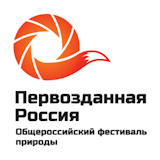

|
|

|
|
EuroBirdwatch-2019. Results
Every year, 25,000,000 birds die from illegal hunting during migration in Europe and Northern Eurasia. EuroBirdwatch is an international campaign on attracting attention of wide public to this problem and protecting birds from barbarism and lawlessness. Eurobirdwatch-2019 was held on October 5-6 in all countries of Europe, Central Asia and Russia. In 35 countries, 28,920 volunteers, birders and professional ornithologists took to the field and counted a total of 4,272,230 birds! Eurobirdwatch started 26 years ago on initiative of BirdLife International. Slovak Ornithological Society (SOS) – BirdLife-Slovakia coordinates the campaign at European level. Since 2017, NGO “Birds and People” is Russian national coordinator of EuroBirdwatch. Since 1993, a total of 1,237,639 people who took part in 42,039 events counted 83,051,756 birds during the autumn migration! Due to active participation of regional coordination centers and volunteers, this year Russia took first place at European level in the number of events (326 events out of 1089 in Europe as a whole) – observations, birding competitions, ornithological excursions and lessons held during the days of EuroBirdwatch-2019. According to the number of participants (2840 people) this year, our country took third place. Participants from 41 regions of Russia counted all together 138,962 birds belonging to 241 species! Moscow took first place for the number of participants (1515 persons) and the number of completed questionnaires (279 profiles). In Moscow the action was managed by the State agency of Nature Conservation – “Mospriroda”, coordinator Svetlana Podvintseva, Director of Ecocenter "Horse Yard”. Tyumen region took the second place by number of participants: 210 people took part in registration of birds. St. Petersburg took the second place in the number of completed questionnaires (110 questionnaires). This means that field observations of birds prevailed among educational activities. Directorate of Protected Areas of St. Petersburg (regional coordinator Tatiana Pavlova) organized EuroBirdwatch third time. Third place in the number of participants was taken by Yaroslavl region, where 149 people devoted their weekends to birds. Absolute leader in the number of recorded birds of all regions sent the questionnaires, including Belarus and Kazakhstan, became Crimea, where 73 observers counted 89,952 birds belonging to 139 species. Coots are approximately half of these - 45 034 individuals. Huge flocks of them, as well as starlings (15 410 individuals) were registered by birders on the Black Sea coast. In Crimea, EuroBirdwatch was managed by Opuksky State Reserve, coordinator – Igor Sikorsky, Head of Scientific Branch. Moscow is in second place in number of birds –10 736 individuals belonging to 68 species. The most numerous of these, were mallards (3,637 individuals), rock doves (1,464 individuals) and great tits (1,416 individuals). Moscow region is in third place. Birders traditionally spend weekends counting birds: 7 287 individuals belonging to 83 species. Starlings lead among birds - 1050 individuals. In total, the most numerous species in Russia were coots (46,014 individuals), common starlings (17,077 individuals) and rock doves (6,780 individuals). Mallards (6,725 individuals) lagged slightly behind them. In Europe as a whole, Finland, where participants counted 1,300,000 birds, won. Sweden took second place with 1,200,000 birds, Hungary took third place-325,039 birds. As well as the last year, Barnacle goose (918 859 individuals) won; Ringdove is on the second place -718 625 individuals and on Common starling is on the third place -309 306 individuals. Ornithologists and birders around the world welcome continued growth of Barnacle goose population considered a rare species in the recent past. However, this fact can be perceived as a warning signal, indicating expansion and change of Barnacle goose habitats due to climate warming. Like other migratory waterfowl, Barnacle geese fly from the Russian Arctic along so-called White Sea-Baltic Flyway, which is a part of the global East Atlantic Flyway. And inhabitants of the Russian North, the Baltic States, States located along the Barents and North seas’ coast, watching the huge flocks of these birds and hearing their sad cries of farewell until next spring. Detailed results of EuroBirdwatch in Russia and 41 regional report are available here: www.eurobirdwatch.ru. |
|















